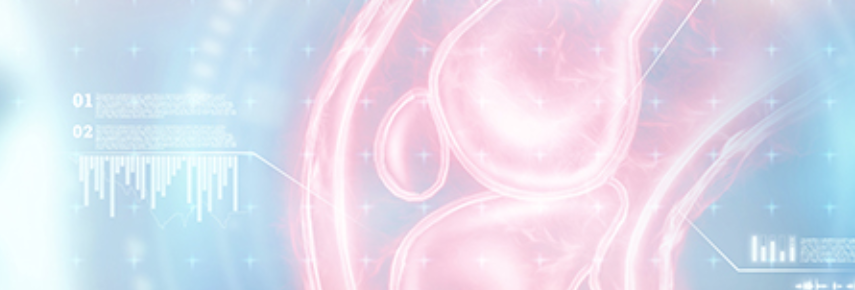Lukas J Moser, Matthias Gutberlet, Rozemarijn Vliegenthart, Marco Francone, Ricardo P J Budde, Rodrigo Salgado, Maja Hrabak Paar, Maja Pirnat, Christian Loewe, Konstantin Nikolaou, Michelle C Williams, Giuseppe Muscogiuri, Luigi Natale, Robin F Gohmann, Christian Lücke, Matthias Eberhard, Hatem Alkadhi
下载PDF
{"title":"心脏成像中与临床相关的心外发现:来自欧洲 MR/CT 登记处的启示。","authors":"Lukas J Moser, Matthias Gutberlet, Rozemarijn Vliegenthart, Marco Francone, Ricardo P J Budde, Rodrigo Salgado, Maja Hrabak Paar, Maja Pirnat, Christian Loewe, Konstantin Nikolaou, Michelle C Williams, Giuseppe Muscogiuri, Luigi Natale, Robin F Gohmann, Christian Lücke, Matthias Eberhard, Hatem Alkadhi","doi":"10.1148/ryct.240117","DOIUrl":null,"url":null,"abstract":"<p><p>Purpose To determine the prevalence of clinically relevant extracardiac findings at cardiac CT and MRI examinations from a multicenter, multinational MR/CT registry and the relationship of prevalence with examination indications and patient characteristics. Materials and Methods This was a retrospective analysis of data from the European Society of Cardiovascular Radiology MR/CT Registry. Data from 208 506 cardiac CT examinations (median patient age, 66 years [IQR, 55-77]; 121 617 [58.33%] male patients) and 228 462 cardiac MRI examinations (median patient age, 57 years [IQR, 42-69]; 145 792 [63.81%] male patients) entered into the registry between January 2011 and November 2023 were analyzed. Clinically relevant extracardiac findings were defined as findings requiring follow-up examinations or influencing clinical management. The association of examination indication and patient characteristics, including age, with prevalence of extracardiac findings was evaluated using incidence rate ratios (IRRs) derived from multivariable Poisson regression models. Results The prevalence of clinically relevant extracardiac findings was 3.28% (6832 of 208 506) at cardiac CT and 1.50% (3421 of 228 462) at cardiac MRI examinations. Extracardiac findings were more common at CT examinations performed for transcatheter aortic valve replacement (IRR, 2.07; <i>P</i> < .001) and structural heart disease (IRR, 1.44; <i>P</i> < .001) compared with CT performed for coronary artery disease (IRR, 1; reference). Extracardiac findings were more common at MRI examinations performed for myocarditis (IRR, 1.36; <i>P</i> < .001) and structural heart disease (IRR, 1.16; <i>P</i> < .001) than for coronary artery disease. Older patient age was also significantly associated with higher prevalence of extracardiac findings, with an IRR for both CT and MRI examinations of 1.02 (<i>P</i> < .001). Conclusion Data from the multicenter, multinational MR/CT registry indicate that clinically relevant extracardiac findings are present at cardiovascular CT and MRI examinations, and the prevalence of these findings is associated with examination indication and patient age. <b>Keywords:</b> Cardiac Imaging Techniques, Incidental Findings, MRI, CT Angiography, CT, Heart Disease <i>Supplemental material is available for this article.</i> © RSNA, 2024.</p>","PeriodicalId":21168,"journal":{"name":"Radiology. Cardiothoracic imaging","volume":"6 5","pages":"e240117"},"PeriodicalIF":3.8000,"publicationDate":"2024-10-01","publicationTypes":"Journal Article","fieldsOfStudy":null,"isOpenAccess":false,"openAccessPdf":"https://www.ncbi.nlm.nih.gov/pmc/articles/PMC11540291/pdf/","citationCount":"0","resultStr":"{\"title\":\"Clinically Relevant Extracardiac Findings at Cardiac Imaging: Insights from the European MR/CT Registry.\",\"authors\":\"Lukas J Moser, Matthias Gutberlet, Rozemarijn Vliegenthart, Marco Francone, Ricardo P J Budde, Rodrigo Salgado, Maja Hrabak Paar, Maja Pirnat, Christian Loewe, Konstantin Nikolaou, Michelle C Williams, Giuseppe Muscogiuri, Luigi Natale, Robin F Gohmann, Christian Lücke, Matthias Eberhard, Hatem Alkadhi\",\"doi\":\"10.1148/ryct.240117\",\"DOIUrl\":null,\"url\":null,\"abstract\":\"<p><p>Purpose To determine the prevalence of clinically relevant extracardiac findings at cardiac CT and MRI examinations from a multicenter, multinational MR/CT registry and the relationship of prevalence with examination indications and patient characteristics. Materials and Methods This was a retrospective analysis of data from the European Society of Cardiovascular Radiology MR/CT Registry. Data from 208 506 cardiac CT examinations (median patient age, 66 years [IQR, 55-77]; 121 617 [58.33%] male patients) and 228 462 cardiac MRI examinations (median patient age, 57 years [IQR, 42-69]; 145 792 [63.81%] male patients) entered into the registry between January 2011 and November 2023 were analyzed. Clinically relevant extracardiac findings were defined as findings requiring follow-up examinations or influencing clinical management. The association of examination indication and patient characteristics, including age, with prevalence of extracardiac findings was evaluated using incidence rate ratios (IRRs) derived from multivariable Poisson regression models. Results The prevalence of clinically relevant extracardiac findings was 3.28% (6832 of 208 506) at cardiac CT and 1.50% (3421 of 228 462) at cardiac MRI examinations. Extracardiac findings were more common at CT examinations performed for transcatheter aortic valve replacement (IRR, 2.07; <i>P</i> < .001) and structural heart disease (IRR, 1.44; <i>P</i> < .001) compared with CT performed for coronary artery disease (IRR, 1; reference). Extracardiac findings were more common at MRI examinations performed for myocarditis (IRR, 1.36; <i>P</i> < .001) and structural heart disease (IRR, 1.16; <i>P</i> < .001) than for coronary artery disease. Older patient age was also significantly associated with higher prevalence of extracardiac findings, with an IRR for both CT and MRI examinations of 1.02 (<i>P</i> < .001). Conclusion Data from the multicenter, multinational MR/CT registry indicate that clinically relevant extracardiac findings are present at cardiovascular CT and MRI examinations, and the prevalence of these findings is associated with examination indication and patient age. <b>Keywords:</b> Cardiac Imaging Techniques, Incidental Findings, MRI, CT Angiography, CT, Heart Disease <i>Supplemental material is available for this article.</i> © RSNA, 2024.</p>\",\"PeriodicalId\":21168,\"journal\":{\"name\":\"Radiology. Cardiothoracic imaging\",\"volume\":\"6 5\",\"pages\":\"e240117\"},\"PeriodicalIF\":3.8000,\"publicationDate\":\"2024-10-01\",\"publicationTypes\":\"Journal Article\",\"fieldsOfStudy\":null,\"isOpenAccess\":false,\"openAccessPdf\":\"https://www.ncbi.nlm.nih.gov/pmc/articles/PMC11540291/pdf/\",\"citationCount\":\"0\",\"resultStr\":null,\"platform\":\"Semanticscholar\",\"paperid\":null,\"PeriodicalName\":\"Radiology. Cardiothoracic imaging\",\"FirstCategoryId\":\"1085\",\"ListUrlMain\":\"https://doi.org/10.1148/ryct.240117\",\"RegionNum\":0,\"RegionCategory\":null,\"ArticlePicture\":[],\"TitleCN\":null,\"AbstractTextCN\":null,\"PMCID\":null,\"EPubDate\":\"\",\"PubModel\":\"\",\"JCR\":\"Q1\",\"JCRName\":\"RADIOLOGY, NUCLEAR MEDICINE & MEDICAL IMAGING\",\"Score\":null,\"Total\":0}","platform":"Semanticscholar","paperid":null,"PeriodicalName":"Radiology. Cardiothoracic imaging","FirstCategoryId":"1085","ListUrlMain":"https://doi.org/10.1148/ryct.240117","RegionNum":0,"RegionCategory":null,"ArticlePicture":[],"TitleCN":null,"AbstractTextCN":null,"PMCID":null,"EPubDate":"","PubModel":"","JCR":"Q1","JCRName":"RADIOLOGY, NUCLEAR MEDICINE & MEDICAL IMAGING","Score":null,"Total":0}
引用次数: 0
引用
批量引用

 求助内容:
求助内容: 应助结果提醒方式:
应助结果提醒方式:


